Plecos are a favorite choice for aquarium enthusiasts due to their peaceful nature and excellent tank-cleaning abilities.
But what about their tank requirements? Which Plecos are suitable for a smaller 20-gallon tank? How can you care for them effectively in such a tank?
This article will provide answers to these questions and more, so you’ll have all the essential information. Let’s begin.
Which Plecos Can Live In 20 Gallons?
Fortunately, a 20-gallon tank can hold a wide variety of Plecos. Here are the main ones worth considering:
1. Claro Pleco (Ancistrus claro)
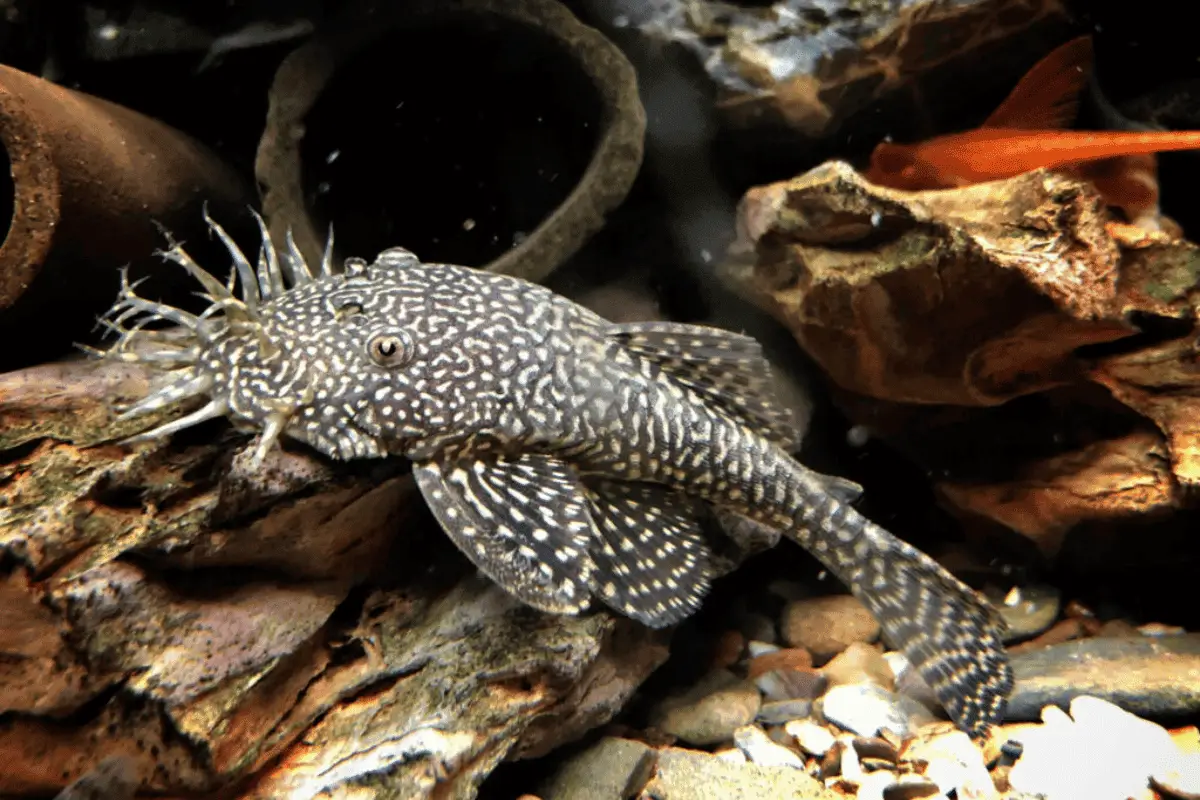
The Claro Pleco is one of the smaller species in the vast family of Loricariidae. Given their compact size, they are ideal candidates for smaller aquarium setups like 20 gallons.
- Size and Growth: Adult Claro Plecos typically measure between 3 to 4 inches in length. This compact size makes them perfect for a 20-gallon tank.
- Tank Requirements: They prefer soft substrates, like sand, where they can rummage around. Plecos in this category often appreciate hiding spots made up of driftwood and caves.
- Dietary Needs: As with many Plecos, Claro Plecos are primarily herbivores, so provide them with a diet rich in vegetables, especially zucchini and spinach, along with high-quality sinking pellets.
2. Bristlenose Pleco (Ancistrus sp.)
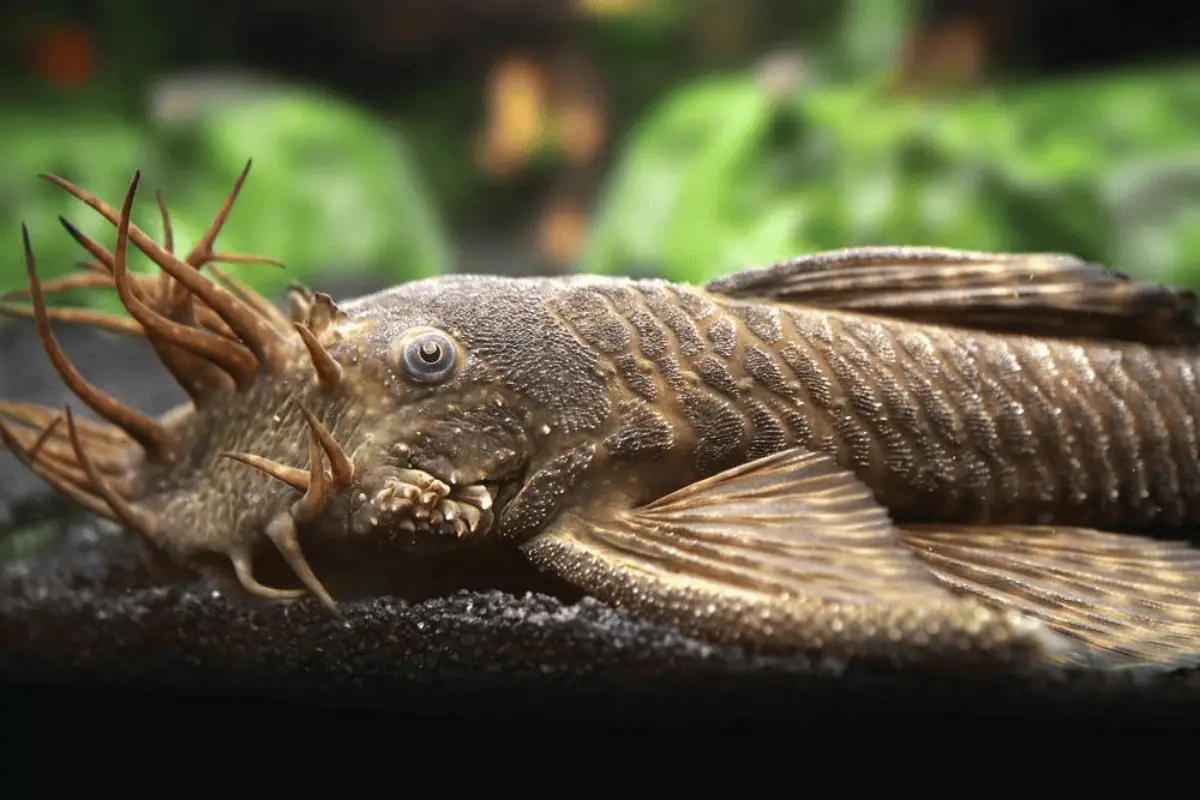
The Bristlenose Pleco, also known as the Bushynose Pleco, is a common choice for smaller tanks because of its manageable size and adaptable nature.
- Size and Growth: Bristlenose Plecos reach an adult size of around 4 to 6 inches. Their smaller stature compared to other Plecos makes them well-suited for a 20-gallon tank.
- Tank Requirements: These Plecos are wood grazers; hence, driftwood isn’t just a hideout but a necessity. They also enjoy caves to breed and rest in, creating a habitat they recognize.
- Dietary Needs: Algae form a big part of their diet, but they also appreciate vegetables and sinking wafers. Plecos of this kind often munch on driftwood too, aiding their digestion.
3. Spotted Hypancistrus (Hypancistrus debilittera)
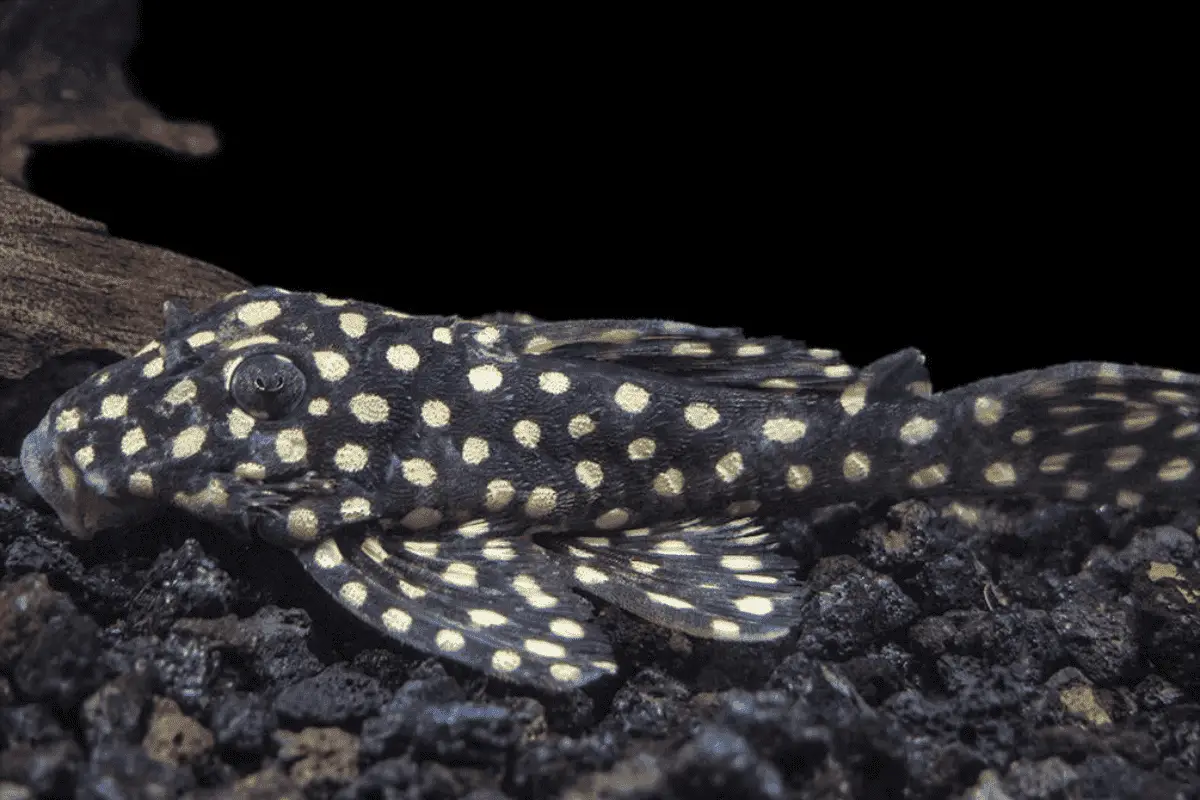
This Pleco variety, recognized for its striking spots, stays on the smaller side, making it a good fit for compact tank setups.
- Size and Growth: Generally, these Plecos remain under 3.5 inches, even when fully grown. This means they comfortably fit and move around in a 20-gallon setting.
- Tank Requirements: They love intricate environments. Include multiple hiding spots, like caves and overhangs, to mimic their natural rocky habitats.
- Dietary Needs: Being omnivores, Spotted Hypancistrus require a balanced diet. Feed them a mix of high-quality sinking pellets and occasional protein sources like brine shrimp.
4. Hypancistrus Phantasma (Hypancistrus phantasm)
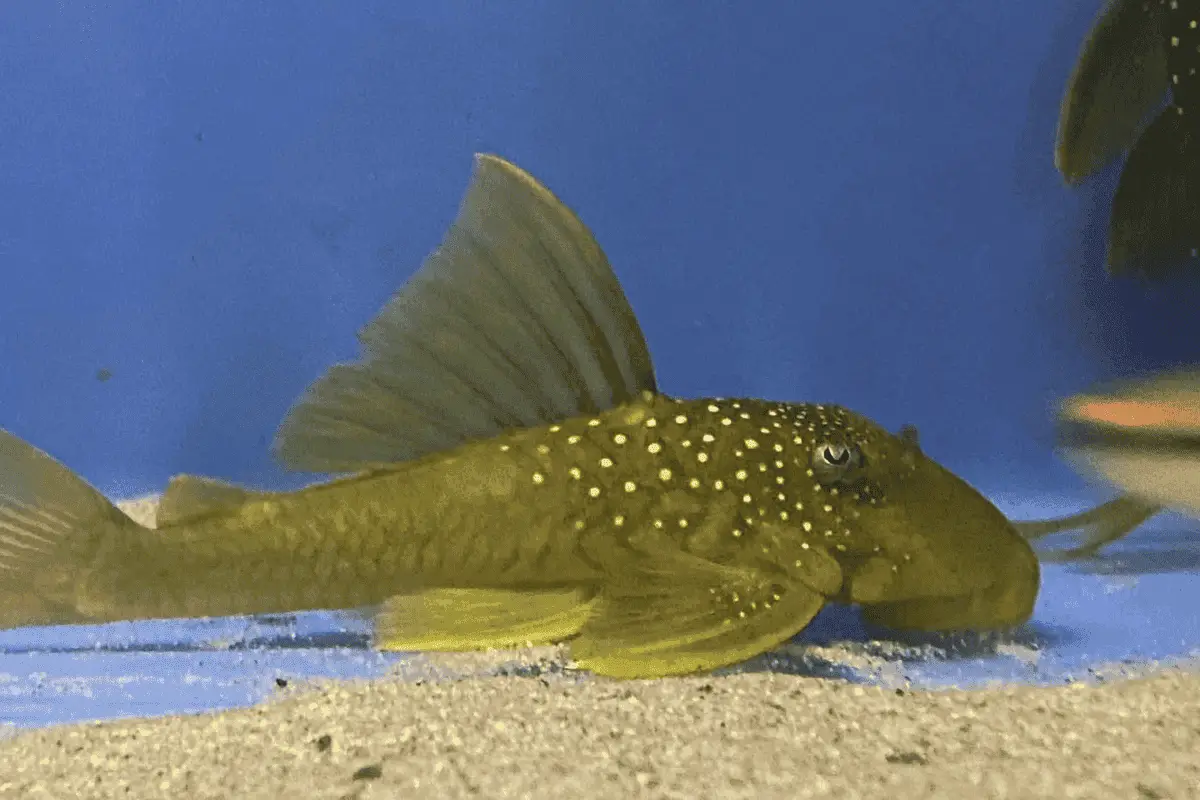
A less common but captivating Pleco, the Hypancistrus Phantasma stands out in smaller tank setups.
- Size and Growth: Typically, these Plecos attain a size around 3.5 to 4 inches. Their limited growth means they adapt well to the confines of a 20-gallon tank.
- Tank Requirements: A darker substrate combined with dim lighting will make them feel at home. Plecos of this variety seek solace in shaded areas, so ensure adequate hiding spots.
- Dietary Needs: Primarily carnivorous, they have a penchant for meaty foods. Offer them frozen or live foods like bloodworms, complemented by sinking pellets.
5. Spotted Rubber Pleco (Parotocinclus spilosoma)
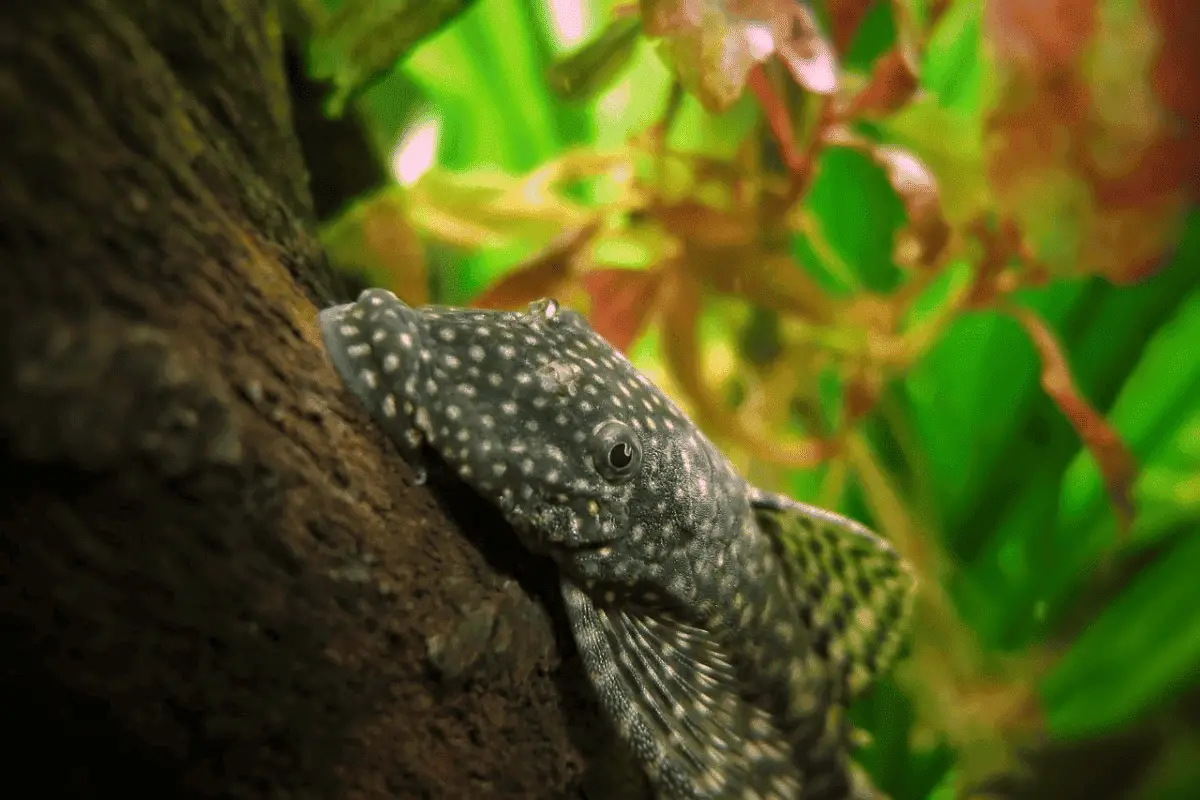
One of the tiniest in the Pleco world, the Spotted Rubber Pleco is a gem for nano tanks and small aquariums alike.
- Size and Growth: Their maximum size is just around 2 inches. With such a diminutive size, Plecos like this are tailor-made for 20-gallon environments.
- Tank Requirements: They appreciate a tank with plenty of plants and driftwood, mimicking a riverbed. Fast-flowing water, replicating their natural habitat, can also be beneficial.
- Dietary Needs: Being herbivores, they’ll happily graze on algae. However, their diet should be supplemented with vegetable-based sinking pellets and fresh vegetables for balanced nutrition.
6. Peckoltia Vittata (Peckoltia vittata)
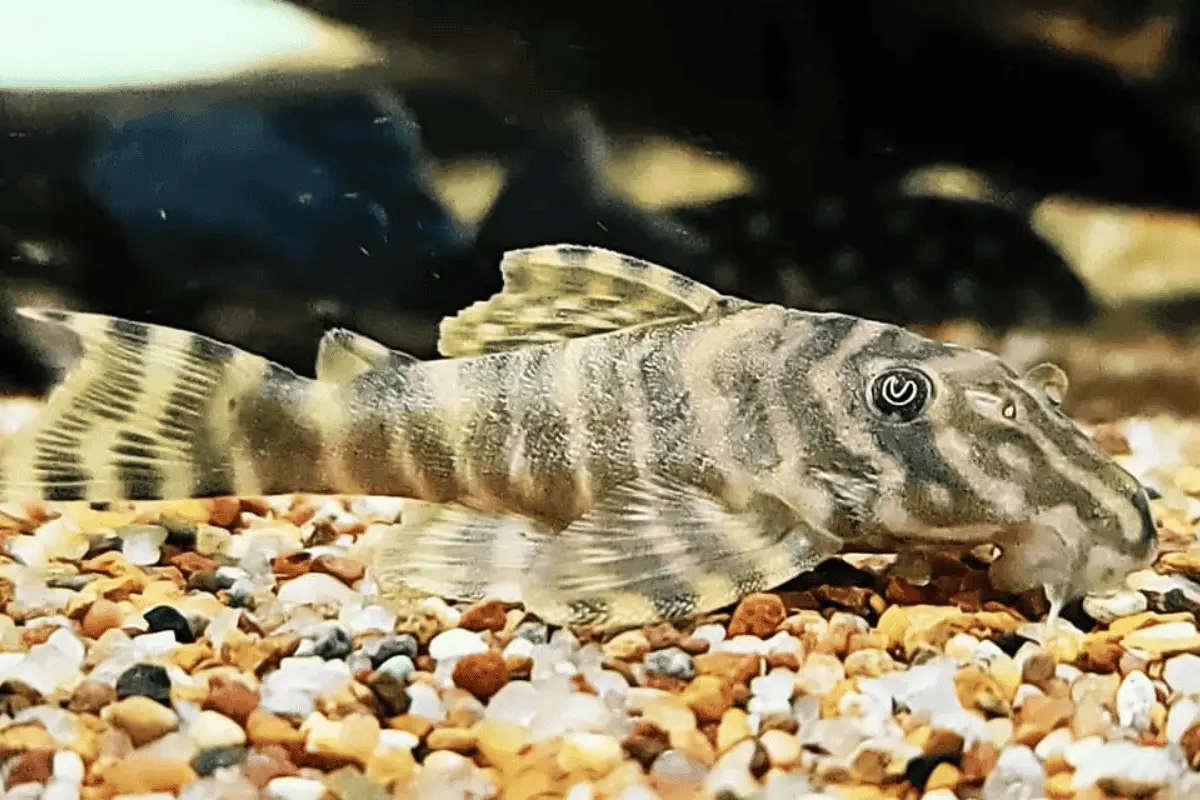
Peckoltia Vittata, with its intriguing patterns, is a choice Pleco for those wanting to add a touch of the exotic to smaller tanks.
- Size and Growth: This species of Pleco averages around 3.5 to 4 inches when mature. Their relatively compact size makes them suited for 20-gallon tanks.
- Tank Requirements: A substrate of fine sand is ideal for them. To recreate their natural environment, Plecos of this kind would benefit from a mix of rocks and driftwood, providing ample hiding spots.
- Dietary Needs: An omnivorous diet works best. Combine high-quality pellets with fresh greens and occasional protein treats like bloodworms.
7. Oto Catfish (Otocinclus sp.)
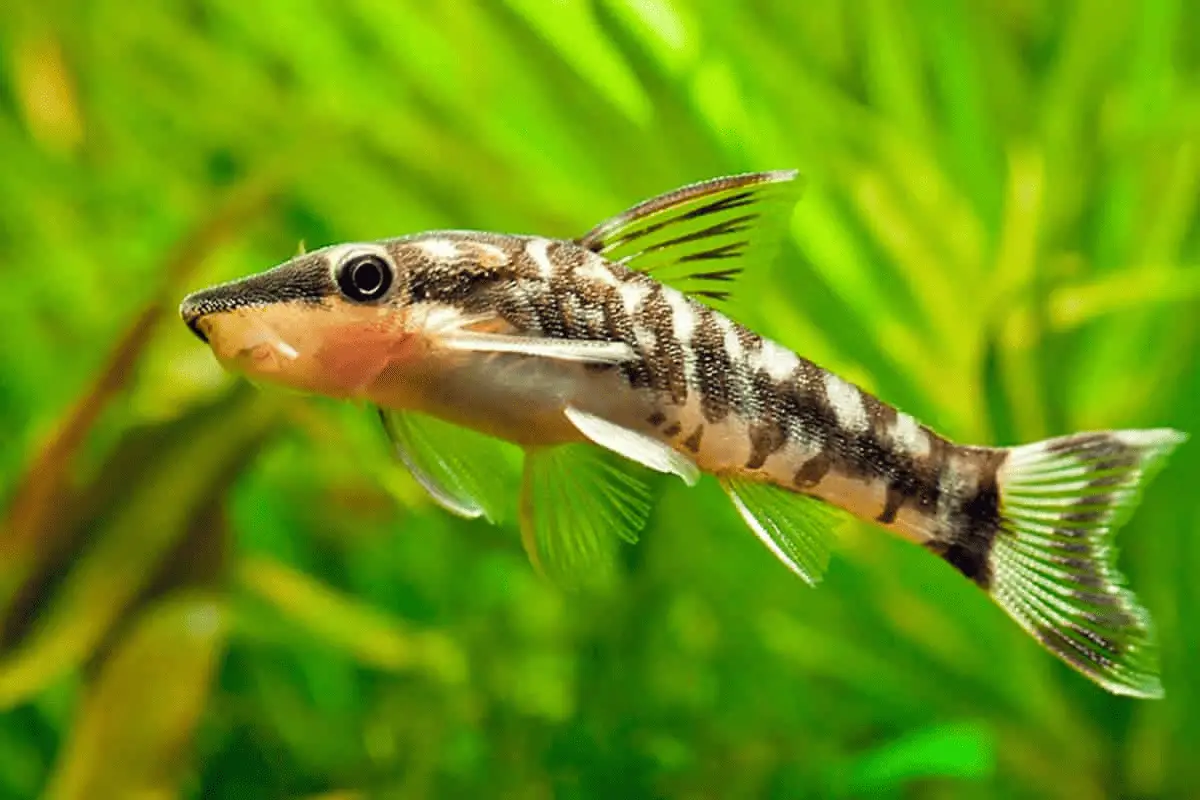
Often mistaken for Plecos, Oto Catfish are a popular choice for small aquariums due to their hard-working nature when it comes to algae consumption.
- Size and Growth: Otos are small, growing only up to 2 inches. Their diminutive size makes them a no-brainer for 20-gallon tanks and even some smaller ones.
- Tank Requirements: Plants are a must for these little cleaners. They’ll often be seen on leaves, consuming algae. Smooth rocks and driftwood also enhance their environment.
- Dietary Needs: While they’re great algae eaters, Otos also require supplemental feeding. Offer them algae wafers and blanched vegetables to ensure they get enough nutrition.
8. Clown Pleco (Panaqolus maccus)
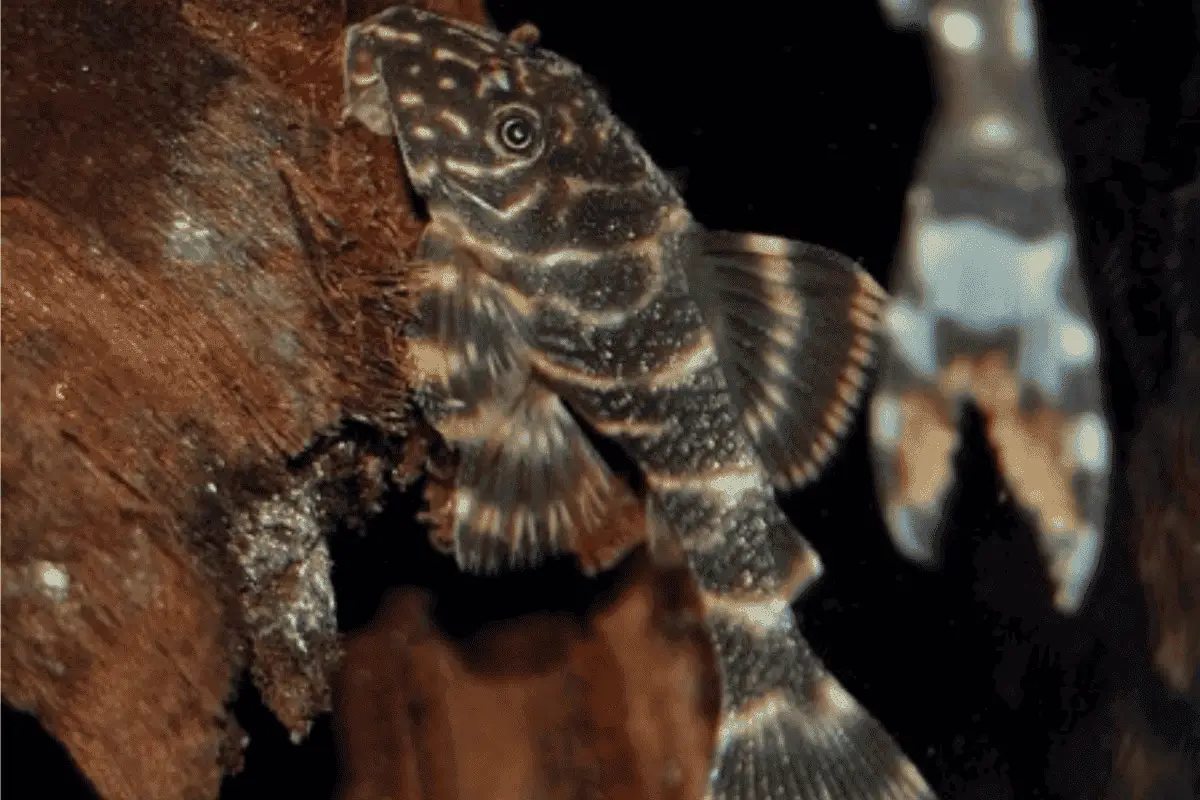
Known for their vibrant patterns, Clown Plecos are both beautiful and size-friendly for smaller aquariums.
- Size and Growth: Most Clown Plecos won’t exceed 4 inches, making them an excellent fit for 20-gallon environments.
- Tank Requirements: Wood is crucial for these Plecos. Not only does it serve as a hiding spot, but they’ll also graze on it. A variety of driftwood pieces in the tank will keep them content.
- Dietary Needs: They’re wood grazers by nature. While they derive some nutrients from wood, a diet supplemented with vegetables and sinking pellets ensures they remain healthy.
9. Jumbo Otocinclus (Parotocinclus jumbo)
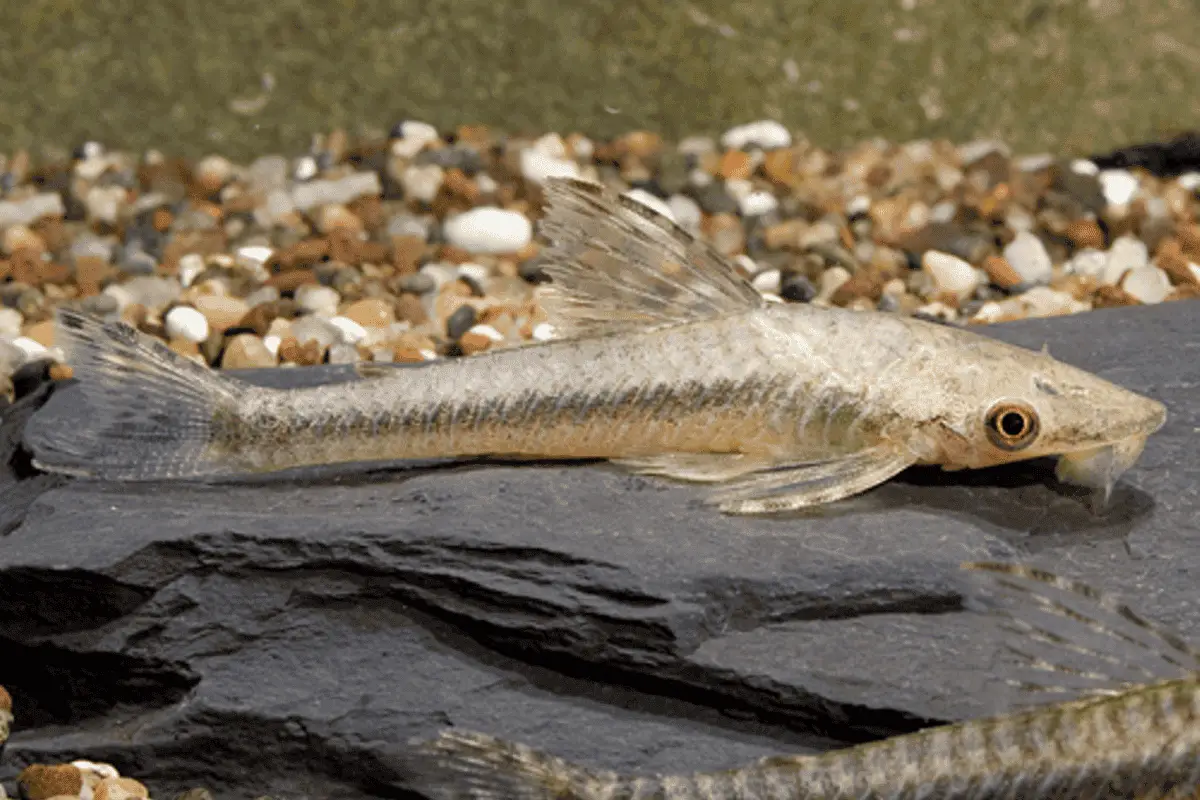
A larger cousin to the standard Oto, the Jumbo Otocinclus still fits comfortably in smaller tanks.
- Size and Growth: Even being “jumbo,” they usually max out around 2.5 inches. This still makes 20-gallon setups appropriate for them.
- Tank Requirements: These Plecos appreciate densely planted environments with plenty of hiding spots. Their natural habitat often consists of submerged woods and rocks, which should be emulated.
- Dietary Needs: Algae is a staple for them, but don’t let them go hungry. Ensure a balanced diet with algae wafers and occasional fresh veggies.
10. Peckoltia Furcata (Peckoltia furcata)
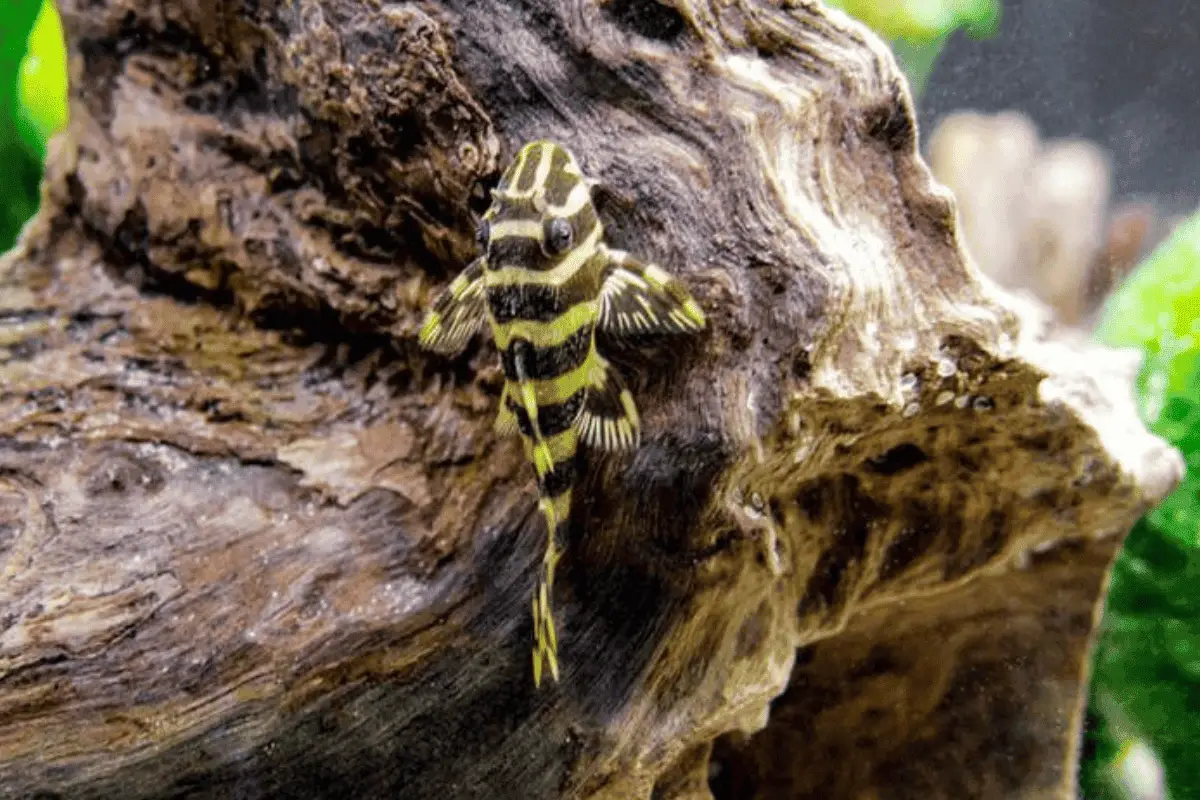
With their distinct appearance, Peckoltia Furcata brings a unique charm to smaller tanks.
- Size and Growth: Averaging around 4 inches when fully grown, they’re another great addition to 20-gallon aquariums.
- Tank Requirements: Sand or fine gravel suits their substrate needs. A combination of caves, rocks, and driftwood will allow these Plecos to explore and rest as they would in the wild.
- Dietary Needs: A mix of plant-based foods and protein is necessary. Offer them sinking pellets, fresh greens, and occasional meaty treats for a comprehensive diet.
11. Panaqolus Albivermis (Panaqolus albivermis)
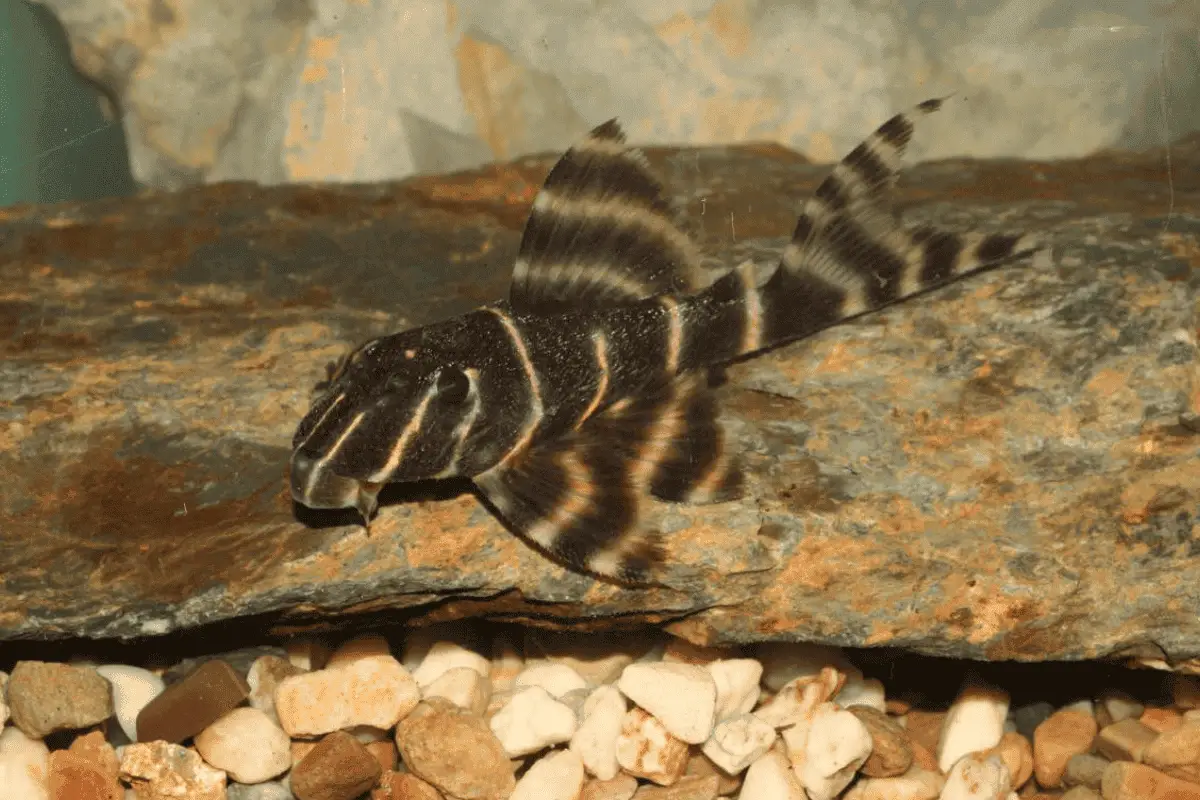
Panaqolus Albivermis is a striking Pleco variant with its lighter, almost white, patterns. These beauties are great additions to intermediate aquarist tanks.
- Size and Growth: Growing to an average length of 4 inches, they find a 20-gallon tank spacious enough for their active lifestyles.
- Tank Requirements: These Plecos are fond of driftwood, not just for hiding but also for snacking. A combination of soft substrates with wood will create a perfect habitat for them.
- Dietary Needs: Their diet should be mostly vegetable-based. But like other Plecos, supplementing with occasional protein sources, such as brine shrimp or bloodworms, offers a well-rounded diet.
12. Hypancistrus Contradens (Hypancistrus contradens)
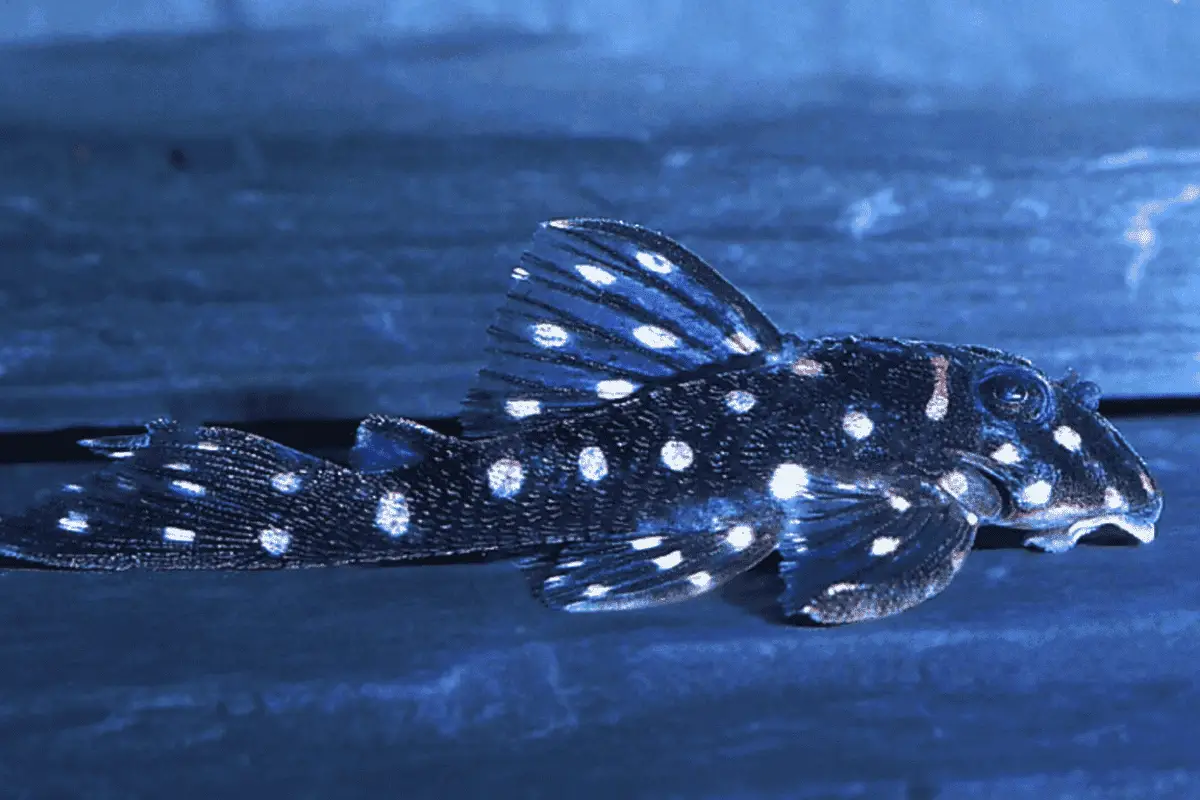
Recognized for its intricate patterning, the Hypancistrus Contradens is a showstopper in any small aquarium.
- Size and Growth: They stay on the smaller end, averaging around 3.5 inches in adulthood, making them an ideal fit for 20-gallon tanks.
- Tank Requirements: These Plecos are from fast-flowing waters, so a good flow rate is essential. Incorporate smooth stones and caves to give them places to rest and hide.
- Dietary Needs: They lean towards carnivory. A diet high in protein, featuring items like bloodworms and brine shrimp, combined with sinking pellets, ensures their well-being.
13. Peckoltia Brevis (Peckoltia brevis)
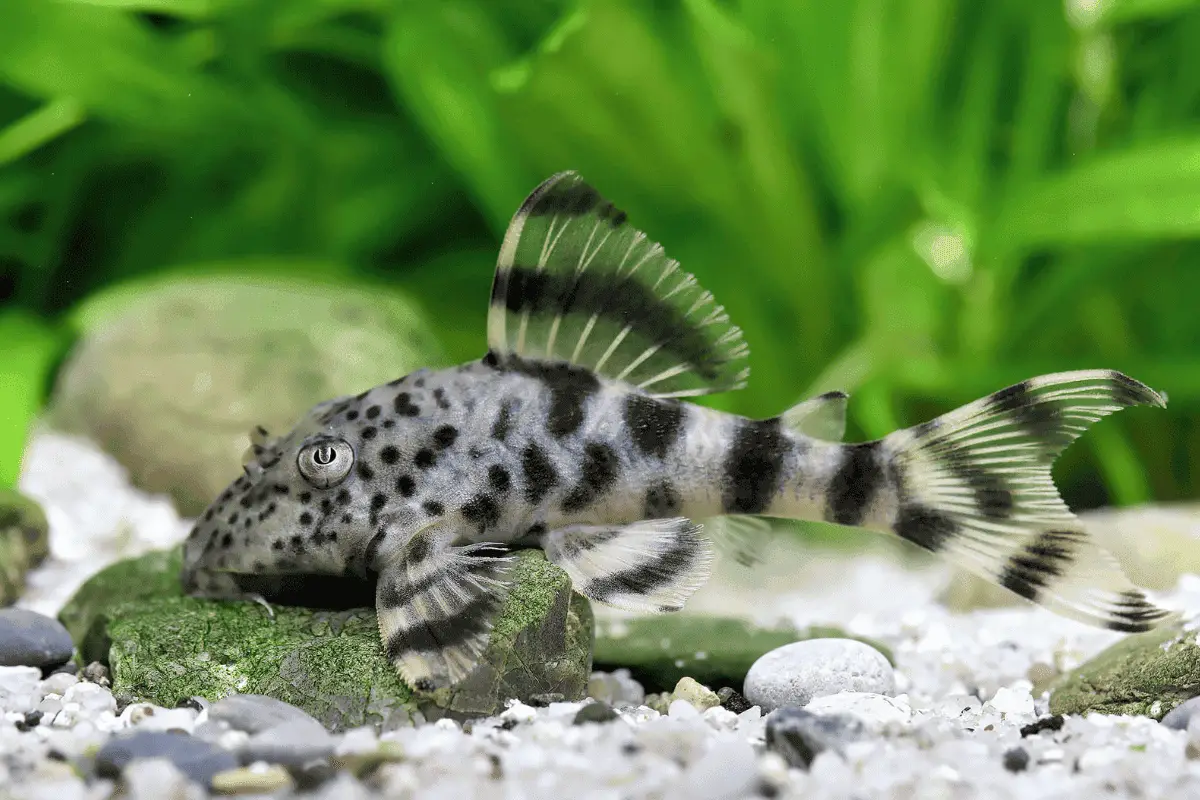
Peckoltia Brevis is a petite Pleco variant that’s suitable for novice and intermediate aquarists alike.
- Size and Growth: Typically reaching a size of around 3.5 inches, their compact stature is well-suited for smaller setups like 20-gallon tanks.
- Tank Requirements: Fine sand as a substrate with a mix of caves and driftwood creates an ideal environment. The addition of leaf litter can also replicate their natural habitat.
- Dietary Needs: Primarily omnivorous, they appreciate both plant matter and meaty foods. A balance between vegetable-based pellets and protein treats ensures their nutrition is met.
14. Galaxy Pleco (Leporacanthicus galaxies)
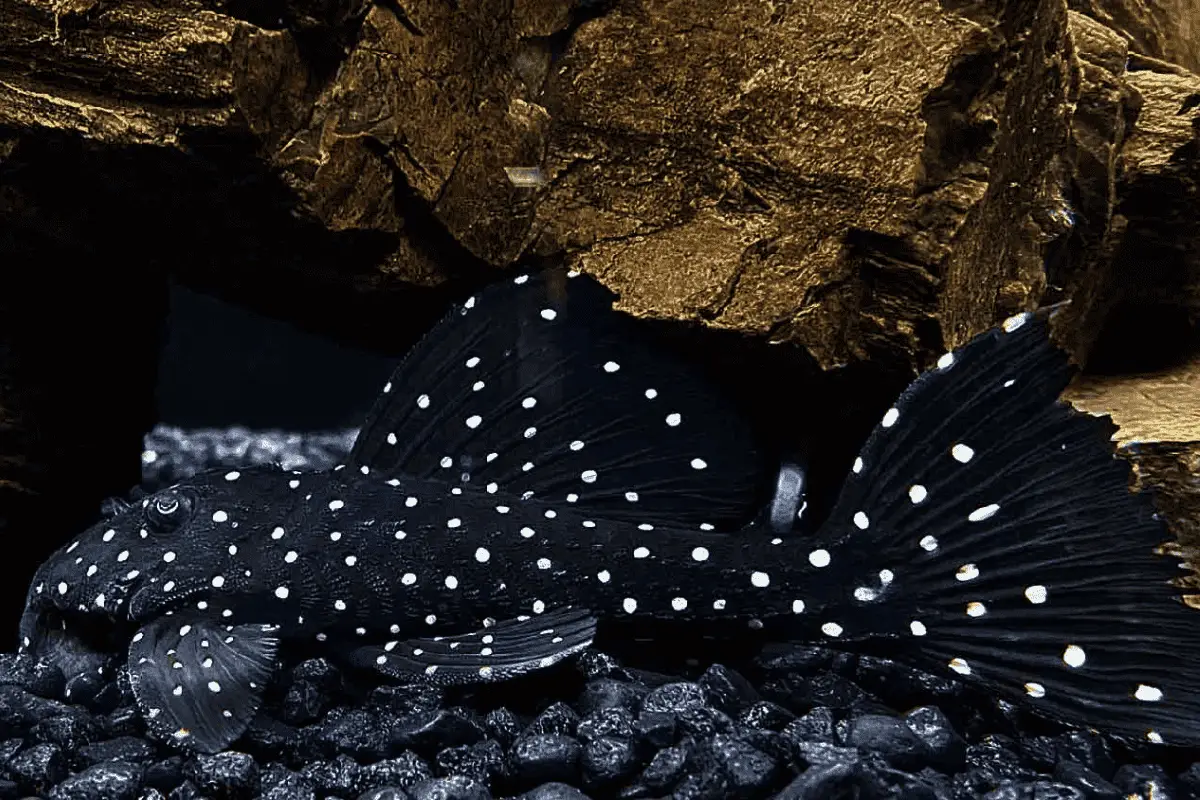
Also known as the Vampire Pleco, the Galaxy Pleco is both stunning and distinct, making it a prized choice for many hobbyists.
- Size and Growth: Growing to about 7 inches, they’re on the upper limit for 20-gallon tanks. However, when given ample hiding spaces, they can thrive.
- Tank Requirements: They love rockwork and caves. Setting up a rocky landscape with spots for them to retreat will keep these Plecos happy.
- Dietary Needs: Galaxy Plecos are omnivorous with a lean towards carnivory. While they’ll eat sinking pellets, it’s crucial to provide meaty foods like shrimp and mussels regularly.
15. Temminck’s Bristlenose (Ancistrus temminckii)
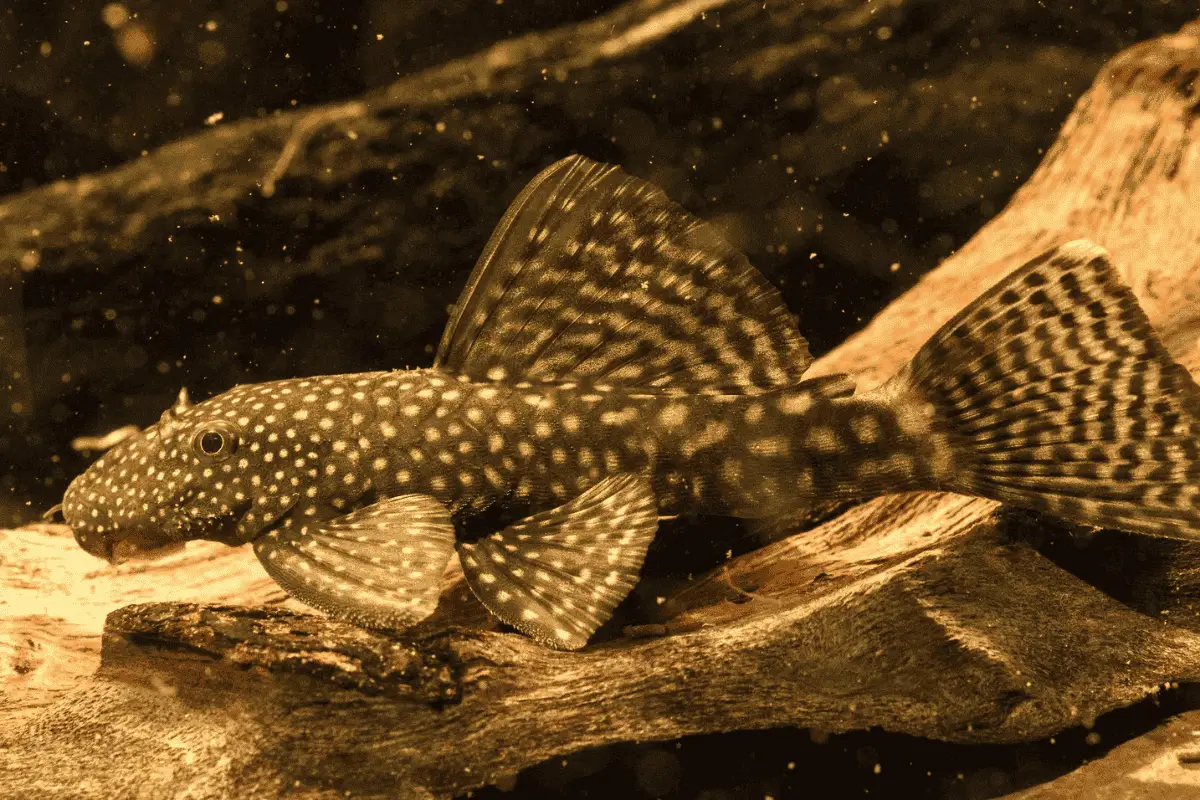
Another delightful variant in the Bristlenose family, Temminck’s Bristlenose is a robust and resilient Pleco, suitable for beginners.
- Size and Growth: Averaging around 5 inches in size, they comfortably fit in 20-gallon tanks, especially when provided with ample hiding spots.
- Tank Requirements: Driftwood is essential for them, both as a hiding spot and a dietary supplement. They appreciate a tank environment rich in plant life, too.
- Dietary Needs: Their diet primarily consists of algae and plant matter. Supplement their diet with high-quality sinking pellets, fresh veggies, and the occasional protein treat to ensure their vitality.
How Many Plecos Can You Have in a 20-Gallon Tank?
In a 20-gallon tank, you should typically house only one medium-sized Pleco (up to 4-6 inches) or up to two smaller Plecos (up to 2-3 inches).
Overcrowding can stress Plecos, negatively impacting their health and well-being.
- Size Matters: Plecos like the Galaxy Pleco grow to 7 inches, dominating a 20-gallon space, while smaller Otos, at 2 inches, allow for two without crowding.
- Territorial Behavior: Plecos are naturally territorial; housing multiples in a 20-gallon can lead to aggression, especially if hiding spots are limited.
- Bioload Considerations: Plecos produce significant waste; even with smaller species, the tank can quickly become overburdened without proper maintenance.
How Many Gallons Do Plecos Need?
The gallon requirement for Plecos depends largely on the species; some thrive in 20-gallon tanks, while others need 100 gallons or more.
Always consider the Pleco’s adult size and habitat needs for optimal health.
- Variability in Species: Bristlenose Plecos can live in 20-gallon tanks, but a Common Pleco, growing up to 24 inches, demands 100 gallons.
- Space for Growth: Plecos grow rapidly; accommodating their adult size from the start prevents future relocations and undue stress.
- Behavior and Territoriality: Plecos are territorial; sufficient space allows them to establish zones, reducing chances of aggressive interactions.
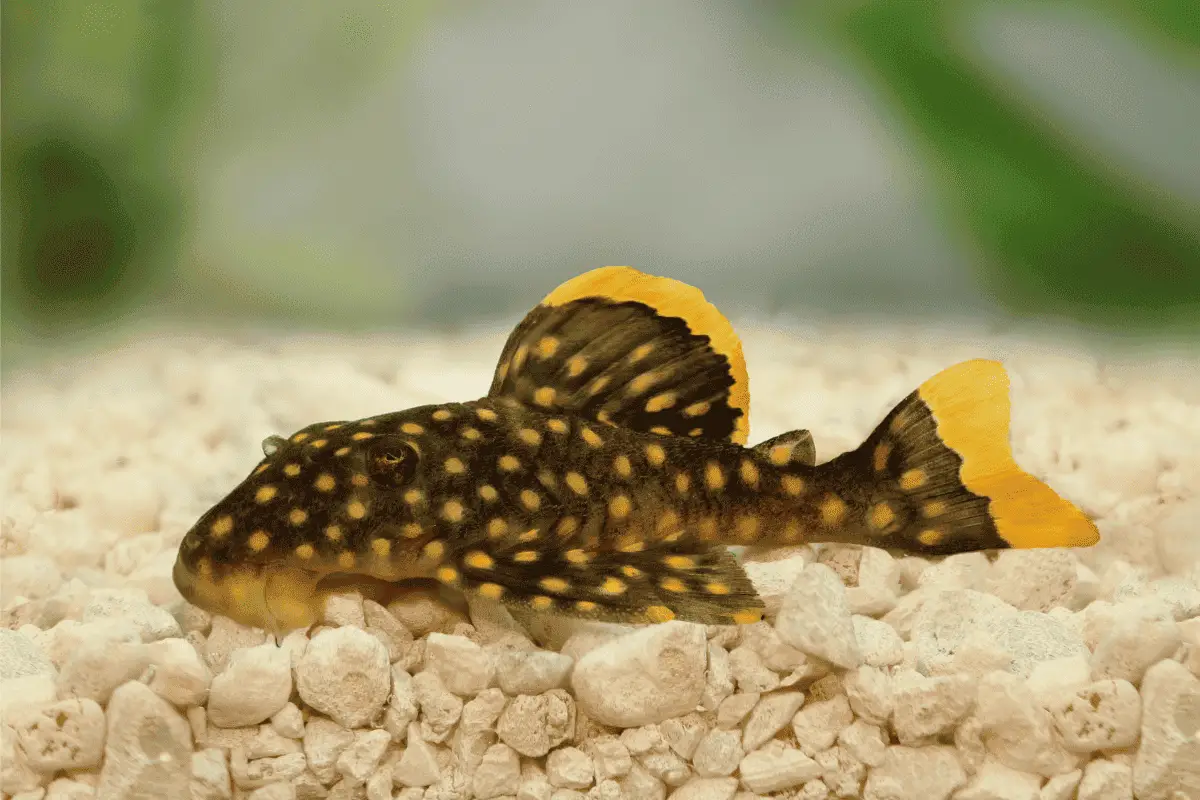
Here’s a simple table showcasing 17 Pleco species and their recommended tank sizes:
| Pleco Species | Recommended Tank Size (in gallons) |
| Oto Catfish (Otocinclus sp.) | 10 – 20 |
| Jumbo Otocinclus (Parotocinclus jumbo) | 15 – 25 |
| Bristlenose Pleco (Ancistrus sp.) | 20 – 30 |
| Claro Pleco (Ancistrus claro) | 20 – 30 |
| Spotted Hypancistrus (Hypancistrus debilittera) | 20 – 30 |
| Peckoltia Brevis (Peckoltia brevis) | 20 – 30 |
| Clown Pleco (Panaqolus maccus) | 20 – 30 |
| Hypancistrus Phantasma (Hypancistrus phantasma) | 25 – 35 |
| Spotted Rubber Pleco (Parotocinclus spilosoma) | 25 – 35 |
| Panaqolus Albivermis (Panaqolus albivermis) | 25 – 35 |
| Hypancistrus Contradens (Hypancistrus contradens) | 25 – 40 |
| Peckoltia Vittata (Peckoltia vittata) | 30 – 40 |
| Peckoltia Furcata (Peckoltia furcata) | 30 – 40 |
| Temminck’s Bristlenose (Ancistrus temminckii) | 30 – 40 |
| Galaxy Pleco (Leporacanthicus galaxias) | 50 – 70 |
| Royal Pleco (Panaque nigrolineatus) | 70 – 125 |
| Common Pleco (Hypostomus plecostomus) | 150 – 200 |
Also Read: Pleco Fish Tank Size
Tips for Housing Plecos in 20 Gallons
Maintaining Plecos in a 20-gallon tank requires thoughtful choice and diligent attention. It’s crucial to pick smaller species and make sure their habitat is ideal.
- Choose the Right Species: In 20 gallons, Bristlenose or Clown Plecos are ideal due to their max sizes of 4-6 inches.
- Provide Adequate Shelter: Use 2-3 hideouts like hollow logs or caves, ensuring they accommodate the Pleco’s adult size. My recommendation: Jabukosu Pleco Cave (link to Amazon).
- Maintain Water Quality: Conduct bi-weekly water changes, removing 25% to prevent waste buildup and keep parameters stable.
- Supplement Their Diet: Apart from algae, feed sinking wafers or blanched veggies like zucchini every other day.
- Monitor Tankmates: Choose non-aggressive, similar-sized fish to cohabit, ensuring the Plecos aren’t stressed or outcompeted for food.
- Ensure Proper Filtration: Opt for a filter with a flow rate 4-5 times the tank’s volume, ensuring efficient waste removal and oxygen distribution.
- Provide Enrichment: Add driftwood for Plecos to graze on, as it can aid in digestion and provide essential nutrients. I personally picked the Dr. Moss Malaysian Driftwood (link to Amazon).
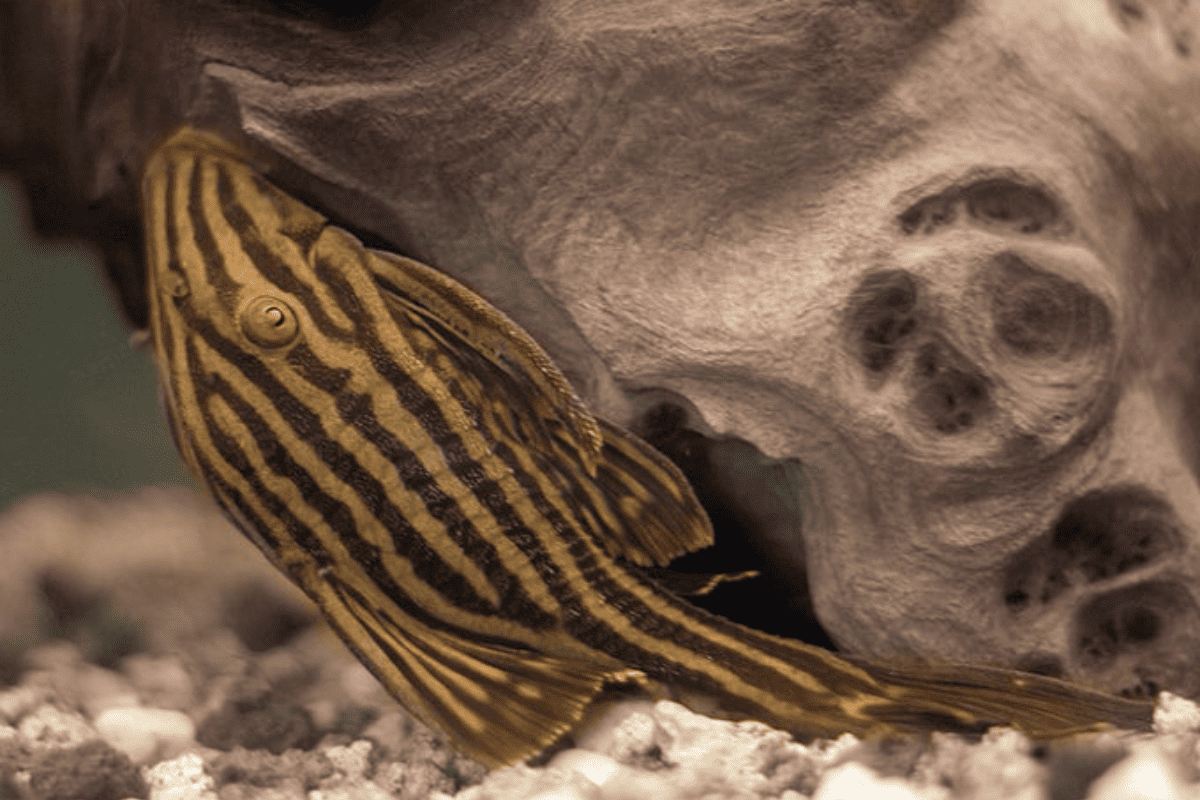
Are There Any Plecos That Stay Small?
Yes, there are several Pleco species that remain relatively small even when fully grown.
While the term “Pleco” often brings to mind the larger, common Plecostomus, many species comfortably stay under 6 inches.
- Bristlenose Plecos: Often reaching just 4 to 6 inches, Bristlenose Plecos are popular choices for medium-sized tanks. They have a distinct appearance with tentacle-like growths on their faces.
- Clown Plecos: At about 3.5 to 4 inches when mature, Clown Plecos are compact with attractive striped patterns, making them favorites among hobbyists.
- Oto Catfish: Not a typical Pleco but similar in behavior, Otos max out around 2 inches. They’re great for small tanks and algae control.
- Peckoltia Vittata: These Plecos have a striking appearance and typically grow to about 4 inches, making them suitable for tanks of 30 gallons or more.
- Hypancistrus Contradens: A beautiful and unique Pleco, it reaches an adult size of around 3.5 inches, making it perfect for those who want something a bit different in a smaller tank.
- Panaqolus Albivermis: Reaching a maximum length of about 4 inches, this Pleco displays charming patterns and is a wonderful choice for medium-sized tanks.
- Jumbo Otocinclus (Parotocinclus jumbo): Contrary to their “jumbo” moniker, these Plecos max out at around 2.5 inches. Their modest size is ideal for tinier aquascapes.
Also Read: Pleco Species In A 10-Gallon Tank

Which Plecostomus Is the Smallest?
The tiniest Plecostomus, or Pleco for short, is the Otocinclus catfish.
While it’s not technically a “true” Pleco, many fish enthusiasts group them together because of their comparable behaviors and appetite for algae.
- Size and Appearance: The Otocinclus catfish, frequently dubbed “Otos,” have a typical length of just 1.5 to 2 inches. Their sleek body design enables them to smoothly move in tight tank spaces.
- Tank Size Recommendations: Unlike many Plecos that need larger tanks due to potential size, Otos fit perfectly in smaller aquariums. A cluster of these diminutive Plecos can flourish in tanks as compact as 10 gallons.
- Natural Behavior: Otocinclus catfish, akin to their bigger Pleco relatives, are superb at consuming algae. They’re frequently observed attached to plant leaves or aquarium glass, actively munching on soft algae.
Also Read: Plecos In A 30-Gallon Tank
Conclusions
For the quick readers, here’s a brief overview:
- Pleco varieties like Claro Pleco and Bristlenose Pleco are apt for 20-gallon tanks because of their size and habitat preferences.
- It’s crucial to account for a Pleco’s full-grown size, territory tendencies, and potential bioload when placing them in 20-gallon tanks to ensure their well-being.
- Tank size preferences differ greatly among Pleco species. Some are fit for 10-gallon tanks, while others necessitate much larger environments, underscoring the need to understand each species’ requirements.
- Smaller Pleco breeds, such as the Otocinclus catfish and Clown Plecos, present enticing alternatives for those who prefer compact tanks with eye-catching fish.
- With its title as the tiniest Plecostomus species, the Otocinclus catfish is a top pick for compact tanks and effective algae management.

